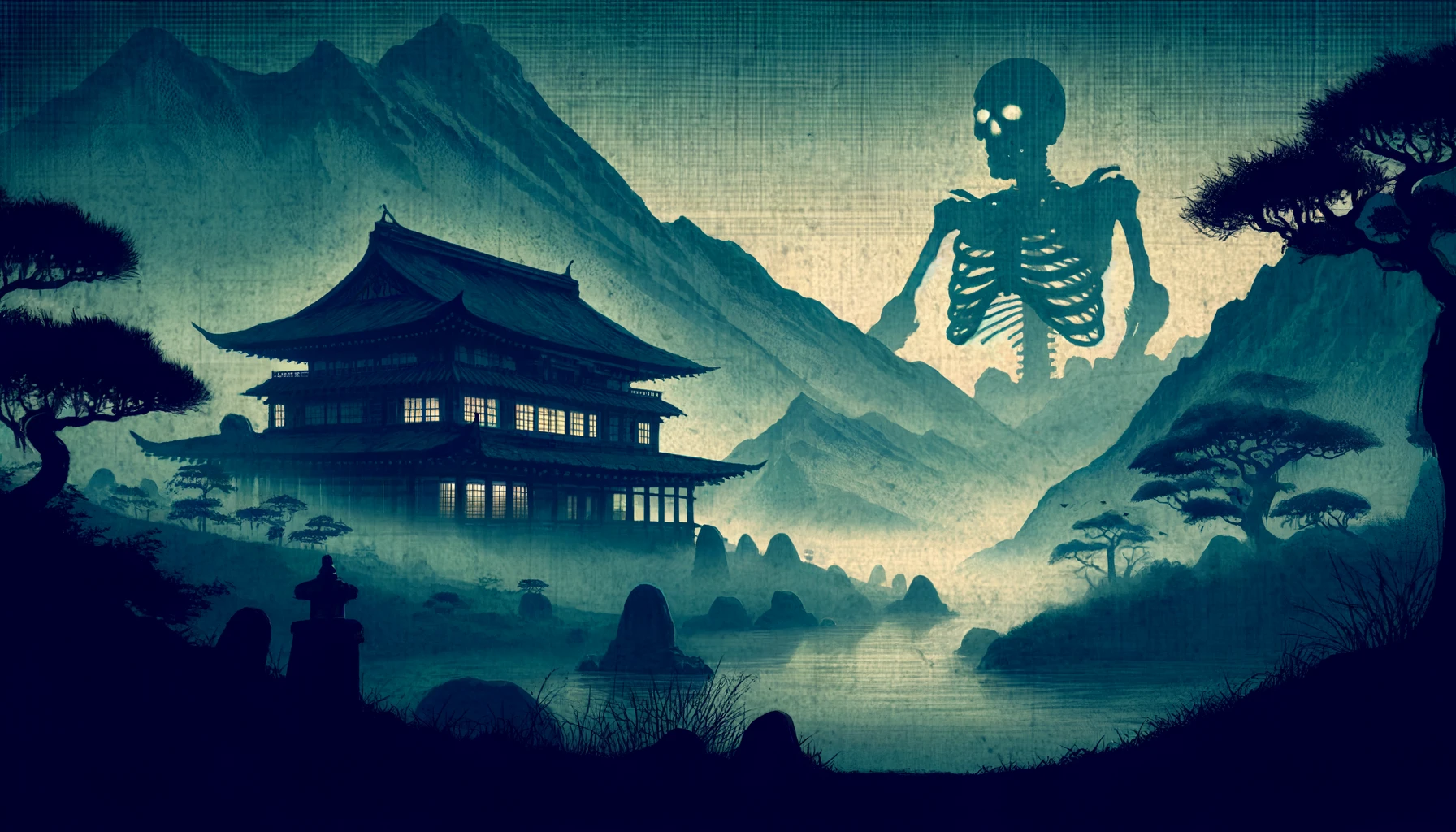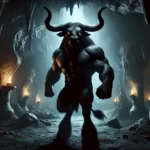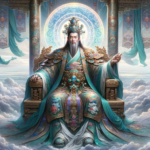The Gashadokuro, a towering skeletal figure lurking in the shadows of Japanese folklore, might seem like a creature born from the wildest imaginations of horror enthusiasts. Yet, this mythical being has roots deeply embedded in Japan’s cultural and historical landscape.
What is Gashadokuro?
Gashadokuro, literally translated as “starving skeleton,” is a mythical creature depicted as a gigantic skeleton, fifteen times taller than an average person. This yōkai (a term used in Japanese folklore to describe supernatural monsters, spirits, and demons) is said to be formed from the accumulated bones of people who died in battle or of starvation, whose bodies were left unburied and forgotten. The anger and pain from these souls come together to form the Gashadokuro, giving it an eerie, formidable presence in folklore tales.
Historical Background
The legend of the Gashadokuro is thought to originate from the later periods of Japanese history, specifically around the 16th century, a time marked by intense social turmoil, warfare, and famine. This era, known as the Sengoku (Warring States) period, saw numerous conflicts that resulted in the deaths of thousands. Often, the dead—typically peasants and soldiers—were left unattended on the battlefields. This neglect led to a widespread belief that the spirits of these individuals could not find peace. Over time, these stories merged into the myth of the Gashadokuro, as the spirits of these forgotten souls found expression in this terrifying legend.
Abilities of the Gashadokuro
The Gashadokuro possesses several chilling abilities that highlight its reputation as a fearsome creature. One of its most notable abilities is its near invisibility, making it an elusive predator that stalks its victims unseen. It is also endowed with superhuman strength, understandably, given its massive size. Perhaps the most terrifying aspect of the Gashadokuro is its method of killing: it is said to catch travelers late at night, crushing them with its powerful hands or biting off their heads.
An eerie warning sign of its approach is a ringing in the ears of potential victims. This sound is said to precede its appearance, serving as a last-minute alert that danger is imminent. However, the stealth and suddenness with which it strikes leave little room for escape.
Abilities Summary:
Invisibility and Stealth: Gashadokuro can move invisibly, making them nearly impossible to detect until they are upon their prey.
Bone-Crushing Grip: These creatures are known to grab unsuspecting victims, crushing them in their bony hands, and sometimes biting their heads off to drink their blood.
Unstoppable Hunger: Their insatiable hunger is a defining characteristic, symbolizing the unending suffering and anger of the spirits that compose them.
Cultural References and Modern Depictions
The Gashadokuro has been a popular subject in various forms of media and art. Its eerie image dates back to the Edo period, notably appearing in prints by artists such as Utagawa Kuniyoshi. In modern times, the Gashadokuro continues to inspire fear and fascination in films, animations, and literature, often symbolizing the consequences of war and the importance of honoring the deceased.
In contemporary media, examples of the Gashadokuro appear in several notable contexts:
Movies: Although not always explicitly named, the Gashadokuro’s influence can be seen in films like “The Great Yokai War” where various yōkai characters are brought to life with a similar menacing and skeletal appearance.
Video Games: The game “Nioh” features the Gashadokuro as a formidable enemy. Its massive skeletal form challenges players in epic battles, embodying the game’s theme of historical Japanese warfare and mythical creatures.
Literature: Manga and anime series such as “Nura: Rise of the Yokai Clan” also include Gashadokuro characters, where they are depicted with traditional lore elements combined with modern storytelling.
Conclusion
The Gashadokuro reflects the darker chapters of human history and the importance of remembering the past in Japanese culture. This mythological figure warns of the consequences of war and the neglect of those who have suffered. Its stories, passed down through generations, help us understand historical values and fears, showcasing how such tales have shaped and continued to influence cultural identity.






